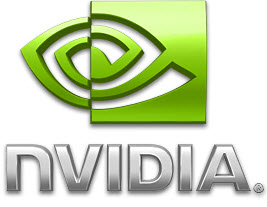 Nvidia reported better-than-expected revenues for its second fiscal quarter, prompting a 9 percent jump in its stock price in after-hours trading thanks to renewed hopes of a turnaround in personal computing.
Nvidia reported better-than-expected revenues for its second fiscal quarter, prompting a 9 percent jump in its stock price in after-hours trading thanks to renewed hopes of a turnaround in personal computing.
Nvidia sells graphics chips for the PC and its results are, like Intel’s, a barometer for the health of the overall computer industry. The company’s fiscal second quarter ended July 26, a month after Intel’s, and so its results are a more recent snapshot of the industry recovery.
There was one hiccup. The company set aside $119.1 million to pay for defects related to the “bump crack” flaw that has dogged the company for more than a year. That shows that the defect, related to the failure of chips to adhere to circuit boards properly, was a lot worse than originally expected. David White, chief financial officer, said on the conference call today that Nvidia is more confident that it is putting the whole issue behind it with the latest write-off.
Overall, Nvidia has lost money for four of the last five quarters as it tries to deal with the economic crisis, the bump crack flaw, and fierce competition from both Intel and Advanced Micro Devices.
In the quarter ended July 26, Nvidia reported a GAAP loss of $105.3 million, or 19 cents a share, compared with a year-earlier loss of $120.9 million, or 22 cents a share. Excluding inventory and other charges, earnings fell to 7 cents a share from 13 cents. Analysts had expected a loss of two cents a share, excluding one-time items. Gross profit margins rose slightly to 20 percent but were below expectations.
Revenue fell 13 percent from a year ago to $776.5 million. But that was far higher than Nvidia’s May forecast of a 5 percent improvement upon the $664.2 million that Nvidia reported in the first fiscal quarter. Analysts had expected $714 million in revenues.
On the bright side, the Santa Clara, Calif.-based company forecast that its sales in the third fiscal quarter would grow 5 percent to 7 percent, while analysts were expecting the quarter to be down 1.2 percent. Average selling prices rose in the quarter and are expected to do so again in the third fiscal quarter, White said.
Jen-Hsun Huang, chief executive, said he was pleased that two new businesses are getting off the ground. The company’s Tesla chips for supercomputers and servers are taking off, with sales reaching $10 million in the quarter. Those chips are leading Nvidia’s charge into high-performance computing.
Huang also said he was hopeful that the launch of Microsoft’s Windows 7 operating system, debuting in October, should increase demand for graphics chips because it can make use of the parallel computing features of graphics chips in a way that prior operating systems couldn’t. You can, for instance, tap the graphics chip to handle video processing tasks to speed up performance.
Nvidia also reported good progress in the launch of its mobile-focused platforms: Ion, for Intel Atom processor-based netbooks (smaller than laptops), and Tegra, for non-Windows based smart phones and mobile Internet devices. Huang said Nvidia is on production for the first major Tegra customer. The customer list includes Microsoft, which is launching a new version of its Zune music player, the Zune HD, this fall.
Huang said there are 50 Tegra designs in the works. The Tegra chips are going into smart phones, media players, electronic book readers, cars, and Internet TV set-top boxes. Nvidia has about 5,506 employees, flat compared to the prior quarter but down considerably from a year ago.
Overall, Nvidia faces a number of strategic issues. Some analysts wonder if Intel and AMD will squeeze Nvidia out of the business with chips that combine microprocessors with graphics. But Huang said that his company is clever and that it would have a surprise on that front sometime down the road. The transition to a future where graphics plays a bigger role in the PC is Nvidia’s biggest opportunity in 10 years, Huang said.
Huang said the third fiscal quarter forecast is conservative given that the economy is still unpredictable.



